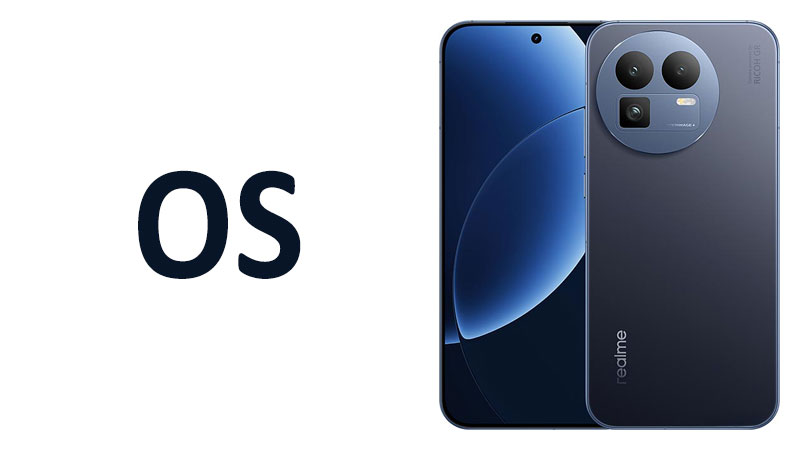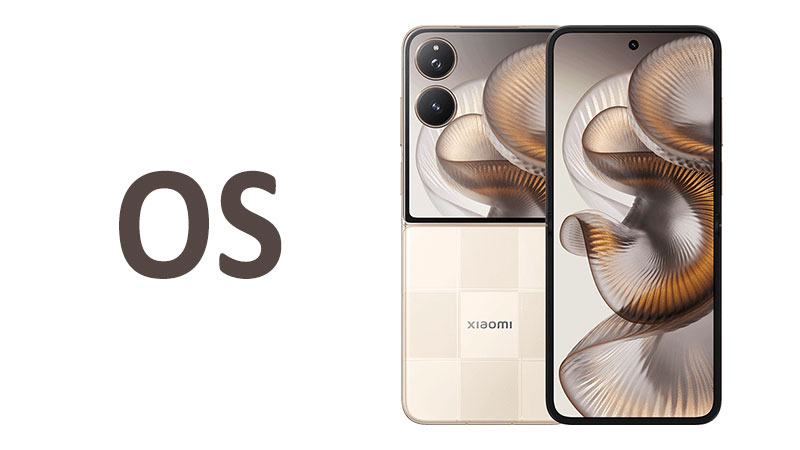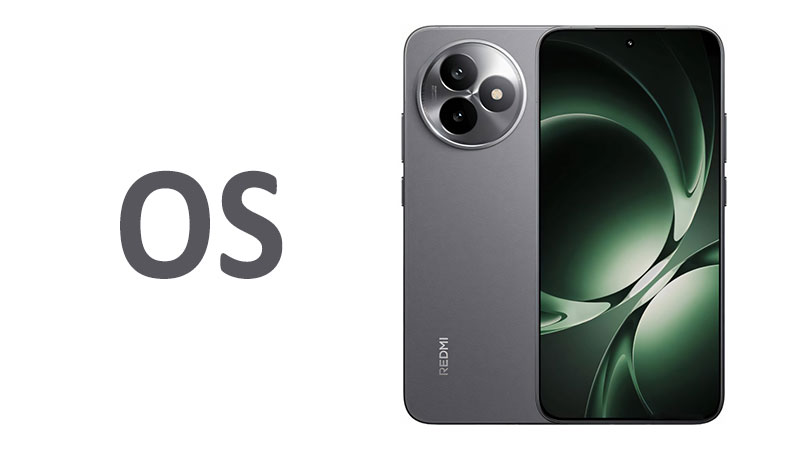The Realme GT 8 OS is a crucial element of the brand’s flagship offering. This advanced operating system defines the entire user experience. It combines Google’s foundational software with Realme’s distinctive interface layer. The Realme GT 8 runs on the powerful Android 16. It also features the latest custom skin, Realme UI 7.0. This combination promises a fast and feature-rich environment. Furthermore, the device comes with an industry-leading commitment to software longevity. This includes receiving up to four major Android upgrades. This article offers a complete and long-form analysis of the Realme GT 8’s software package. We will review its core components. We will also examine the long-term support promise. Finally, we will help you understand its impact on daily use and device value. Understanding these details is vital for any potential buyer.
The Core Foundation: Android 16 on the Realme GT 8
The Realme GT 8 launches with the cutting-edge Android 16 operating system. This latest version of Android provides the stable and secure base layer. It is built upon years of Google’s software innovation. Android 16 introduces several fundamental improvements. These enhancements focus heavily on user privacy and security. They also significantly boost system-wide performance.
Key Features and Enhancements of Android 16
Android 16 brings a refined approach to resource management. The system is better at handling background processes. This results in smoother multitasking. Applications launch faster. Switching between demanding games and everyday apps feels instantaneous. This efficiency is perfect for a high-performance phone like the Realme GT 8.
Privacy controls are a major focal point in Android 16. The operating system offers more granular permissions. Users have precise control over app access to data like the camera and microphone. A new Privacy Dashboard provides a clear overview of app activities. This feature lets users see which apps accessed sensitive information and when. This transparency builds greater user trust.
The system also introduces enhanced security features. Android 16 has improvements to its sandboxing architecture. This makes it harder for malicious software to affect the device. Furthermore, new APIs allow for faster implementation of security patches. This helps keep the device protected against emerging threats.
Specialized Comparison: Android 16 vs. Previous Models
Compared to Android 15, the new version refines existing concepts rather than revolutionizing them. Android 15 was a great step for battery optimization. Android 16 builds on this with smarter battery-saving modes. These modes use machine learning to predict user usage patterns. Consequently, the phone conserves power more effectively without sacrificing performance.
When looking at competitors, the Android 16 experience on the Realme GT 8 stands out. Other manufacturers often heavily modify the base Android OS. This sometimes causes delays or performance dips. Realme’s implementation, combined with the GT 8’s powerful hardware, feels exceptionally swift. The synergy between the software and the processor is highly optimized. This optimization is particularly noticeable in high-refresh-rate scenarios.
Pros and Cons of the Android 16 Base
Pros of Android 16
- Enhanced Security Protocols: The system provides robust protection against modern cyber threats.
- Granular Privacy Controls: Users get detailed control over app permissions and data access.
- Superior Resource Management: This results in excellent multitasking and application stability.
- Optimized Battery Performance: Intelligent power-saving modes extend the device’s usage time significantly.
- Future-Proof Architecture: The modern codebase supports the latest application standards and technologies.
Cons of Android 16
- Initial App Compatibility: Some older applications might require updates from developers to fully support the new OS features. This is common with any major Android launch.
- Learning Curve: Users migrating from very old Android versions may need time to adapt to the new interface and settings layout.
- Heavy Feature Set: The sheer volume of features can sometimes feel overwhelming to minimalist users.
The Realme Identity: Deep Dive into Realme UI 7.0
While Android 16 provides the engine, Realme UI 7.0 is the bodywork and dashboard. This custom operating system layer sits on top of Android. It introduces unique aesthetics, proprietary features, and deep customization options. Realme UI 7.0 aims to strike a perfect balance. It combines the clean principles of stock Android with the feature richness expected by power users.
Design Philosophy and User Experience
Realme UI 7.0 adopts a clean and fluid design language. The interface uses bright colors and large, legible icons. This design promotes a refreshing visual experience. The core focus is on smooth animations. Every interaction, from swiping the home screen to opening the quick settings panel, is fast. The developers have minimized visual clutter.
Customization is a major selling point of Realme UI 7.0. Users can extensively personalize their phone’s appearance. Options include changing icon shapes, system accent colors, and font styles. A highly detailed theming engine is also available. It allows for deep modification of the entire user interface. Furthermore, the Always-On Display (AOD) functionality is highly customizable. Users can create unique visual elements for their AOD.
Exclusive Features of Realme UI 7.0
Realme UI 7.0 introduces several proprietary features. These features aim to enhance productivity and gaming.
One notable feature is the enhanced Flexible Window system. This allows for seamless resizing and moving of apps in windowed mode. Multitasking becomes much more fluid and intuitive. Users can quickly reference information from one app while working in another. This boosts overall workflow efficiency.
Another key addition is the GT Mode 5.0. This feature is tailored for the Realme GT 8’s powerful hardware. When activated, GT Mode 5.0 unlocks the full potential of the CPU and GPU. It also optimizes network connection and touch response rates. This provides a competitive edge in high-stakes mobile gaming. The system also includes advanced thermal monitoring when GT Mode is active.
Specialized Comparison: Realme UI 7.0 vs. Competitors
Realme UI 7.0 offers a great middle ground when compared to rivals. For example, some competing interfaces like MIUI or HyperOS are known for their heavy visual presence and extensive, sometimes intrusive, proprietary apps. Realme UI 7.0 is comparatively lighter. It keeps the system responsive and closer to stock Android.
Compared to Samsung’s One UI, Realme UI 7.0 often offers slightly faster animations. This contributes to a feeling of greater speed. However, One UI sometimes provides more deep integration with desktop environments. Realme focuses more on on-device performance and visual flair.
Compared to its predecessor, Realme UI 6.0, the new 7.0 version is a significant visual upgrade. Realme UI 6.0 focused on stabilizing the interface. Realme UI 7.0 refines the aesthetics and adds meaningful functionality like the advanced Flexible Window feature. The optimizations in GT Mode 5.0 are also a generational leap. They harness the power of the new chipset more efficiently.
Pros and Cons of Realme UI 7.0
Pros of Realme UI 7.0
- Fluid Performance: The UI is lightweight and highly optimized for speed and fast transitions.
- Deep Customization: Users have extensive tools to personalize the phone’s look and feel.
- GT Mode 5.0: This dedicated gaming mode maximizes hardware performance for intensive titles.
- Enhanced Multitasking: The Flexible Window feature improves productivity significantly.
- Clean Aesthetics: The design is modern, visually appealing, and less cluttered than many competitors.
Cons of Realme UI 7.0
- Bloatware Concerns: Like many custom UIs, Realme UI 7.0 comes with some pre-installed applications. Some users may not find all of these apps useful.
- Learning Curve for New Users: The sheer number of customization menus can be complex for those moving from stock Android.
- Regional Feature Differences: Certain advertised features may be restricted to specific geographic markets upon launch.
The Longevity Promise: Up to 4 Major Android Upgrades
The commitment to software updates is a critical factor for modern smartphone purchases. It affects security, feature access, and the overall lifespan of the device. The Realme GT 8 makes a bold statement in this area. It promises up to four major Android upgrades. This means the phone is set to receive Android 17, Android 18, Android 19, and even Android 20.
Understanding the Upgrade Commitment
A “major Android upgrade” refers to a transition from one base Android version to the next. For instance, moving from Android 16 to Android 17. These updates bring significant new features. They also introduce fundamental security enhancements and performance boosts. This commitment means the Realme GT 8 will remain feature-relevant and secure for many years.
In addition to major OS upgrades, the commitment usually includes security patches. While Realme specifies the major OS updates, buyers can expect a commensurate period of security support. This typically means five years of security patch delivery. This ensures the device is protected long after its initial purchase.
Comparison with Industry Standards
The promise of four major Android upgrades places the Realme GT 8 at the very top of the industry. Historically, Android manufacturers offered only one or two major upgrades. In recent years, premium brands have standardized on three or four major updates. Samsung, for example, pioneered this long-term support model.
By matching the highest standard of four major updates, Realme ensures its flagship is competitive on longevity. This commitment directly addresses a primary concern for high-end smartphone buyers. It dramatically increases the phone’s resale value and overall cost-effectiveness. The extended support differentiates the GT 8 from many mid-range rivals. Those competitors often stick to just two years of software updates.
Impact on Buyer Value and Security
Enhanced Security and Reliability
Long-term software support is fundamentally about security. Every major Android version introduces new protections and closes vulnerabilities. Receiving four major updates guarantees the GT 8 will run on modern security architecture well into the future. This is paramount for protecting sensitive personal and financial data.
Increased Resale Value
The resale value of a smartphone is closely tied to its software status. A phone running a newer, supported OS is always more attractive to buyers. A Realme GT 8 running Android 18 or 19 will command a much higher price than a similar-age phone stuck on an older, unsupported version. This makes the purchase a better long-term investment.
Access to New Features
Google continually introduces innovative features within each new Android release. These include new connectivity standards, enhanced AI capabilities, and user interface improvements. The four-upgrade promise ensures that Realme GT 8 users will get to experience these innovations. They will not be left behind as technology advances. This maximizes the utility of the hardware over its lifetime.
Pros and Cons of the Upgrade Commitment
Pros of the 4-Major Upgrade Commitment
- Market-Leading Longevity: The phone will receive updates for five to six years. This rivals the best in the business.
- Maximum Security: Consistent updates ensure the highest level of protection against vulnerabilities.
- Feature Continuity: Users will benefit from new Android features and improvements for an extended period.
- Exceptional Value Retention: The device will maintain a higher resale value for a longer time.
- Reduced E-Waste: Extending the useful life of the phone is an environmentally conscious decision.
Cons of the 4-Major Upgrade Commitment
- Update Rollout Speed: While the commitment is for four updates, the speed of delivery can vary. Realme must integrate its UI 7.0 layer onto the new Android versions. This process can sometimes take several months.
- Potential for Instability: Early releases of major OS updates can occasionally introduce new bugs. This is a common industry issue, not exclusive to Realme.
Buyer’s Guide: Key Considerations for the Realme GT 8 OS
Choosing the Realme GT 8 involves more than just looking at the hardware specifications. The operating system and upgrade policy define the day-to-day experience. Potential buyers should consider how the combination of Android 16, Realme UI 7.0, and the four-year upgrade commitment fits their needs.
Performance and Gaming Focus
The Realme GT 8 is positioned as a high-performance device. The OS is tuned to reinforce this. Realme UI 7.0’s GT Mode 5.0 is a significant factor here. Gamers should appreciate the dedicated optimization it provides. The underlying efficiency of Android 16 also ensures sustained high frame rates. This is crucial for competitive gaming.
Users who prioritize raw speed will find the Realme GT 8 OS highly appealing. The fluid animations and fast app loading times are a direct result of software optimization. The phone feels fast in every scenario, not just benchmarks.
Customization vs. Simplicity
Realme UI 7.0 offers vast customization options. This is fantastic for users who like to personalize their experience. They can tweak every visual aspect of the phone. However, users who prefer a minimalist, stock Android look and feel should be aware of this. While the UI is clean, it is still feature-rich and requires some navigation. Fortunately, the core Android 16 components are easily accessible.
Long-Term Ownership Philosophy
The four major OS upgrades are a game-changer for long-term users. If you plan to keep your smartphone for three years or more, the Realme GT 8 is an excellent choice. This promise means you avoid the pressure of forced hardware upgrades simply because the software is outdated. The device will feel modern even years after its release. This benefit far outweighs initial cost differences compared to less-supported phones.
The Importance of Security Patches
While the four major upgrades are advertised, the continuous flow of monthly or quarterly security patches is equally important. Buyers should verify Realme’s track record for delivering these patches consistently. A reliable schedule ensures that the device is protected from newly discovered software vulnerabilities. The Android 16 architecture is designed to facilitate faster patching. This should allow Realme to meet or exceed expectations for rapid security updates.
Conclusion
The Realme GT 8 OS package is a powerful combination of modern software and forward-looking commitment. The phone runs on the highly efficient and secure Android 16. This provides a robust foundation of privacy features and performance optimization. Layered on top is the customized Realme UI 7.0. This interface is known for its speed, comprehensive customization options, and powerful gaming features like GT Mode 5.0.
The most compelling aspect, however, is the commitment to up to four major Android upgrades. This guarantee instantly elevates the Realme GT 8’s value proposition. It ensures longevity, maintaining the device’s security and feature set for many years. This policy is on par with the best in the mobile industry.
For the potential buyer, this means several things. You are purchasing a device that is fast and enjoyable to use right now. Furthermore, you are making a secure long-term investment. The extended software support protects your data and ensures a better resale value down the line. The Realme GT 8 is highly recommended for users who value high performance, deep customization, and a long, supported product lifecycle. This comprehensive software strategy makes the GT 8 a true flagship contender.
FAQ
Is the Realme GT 8 operating system the latest Android version?
Yes, the Realme GT 8 launches with the latest version, Android 16, providing the newest features and security protections.
How many major Android upgrades will the Realme GT 8 receive?
The Realme GT 8 is committed to receiving up to four major Android operating system upgrades, ensuring long-term feature support.
What is Realme UI 7.0, and is it better than the previous version?
Realme UI 7.0 is the customized user interface layer built on Android 16. It offers enhanced design, fluid animations, and improved features like GT Mode 5.0 compared to Realme UI 6.0.
Does the Realme GT 8 get regular security updates?
Yes, the phone is expected to receive security patches alongside its major OS upgrade commitment, typically providing security support for up to five years.
What is GT Mode 5.0 in Realme UI 7.0?
GT Mode 5.0 is a specialized feature in Realme UI 7.0. It optimizes the CPU, GPU, network, and touch response to deliver maximum performance for mobile gaming.



